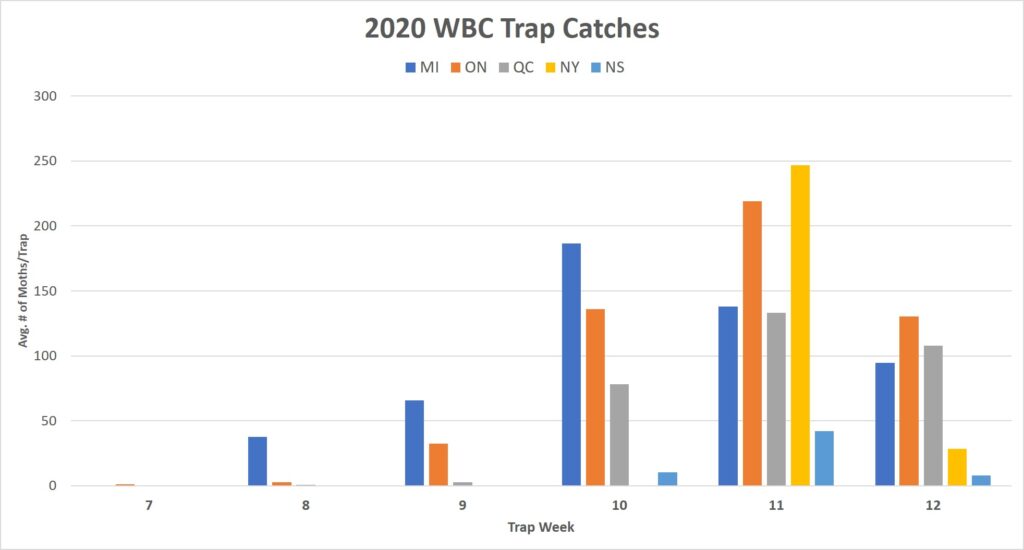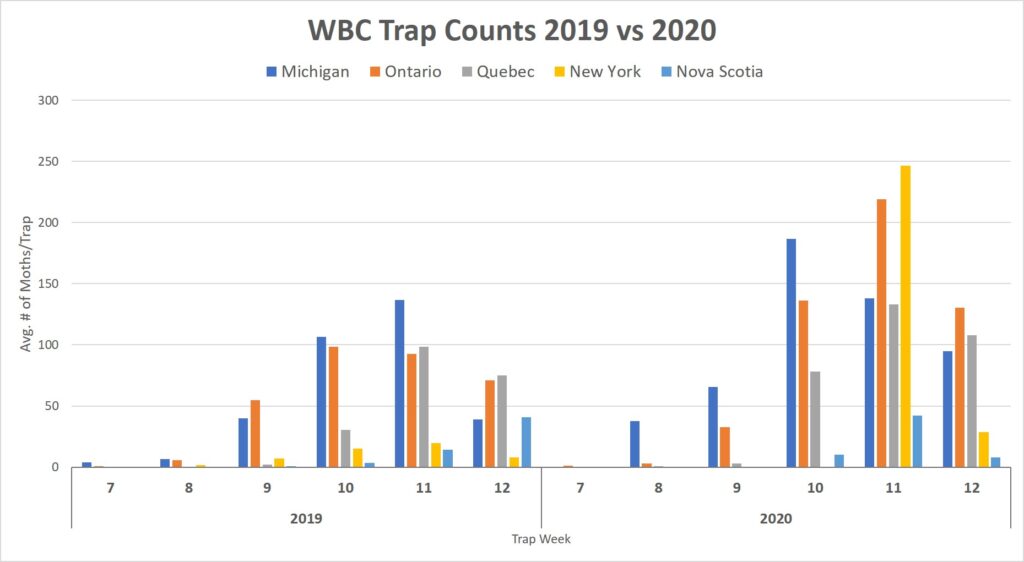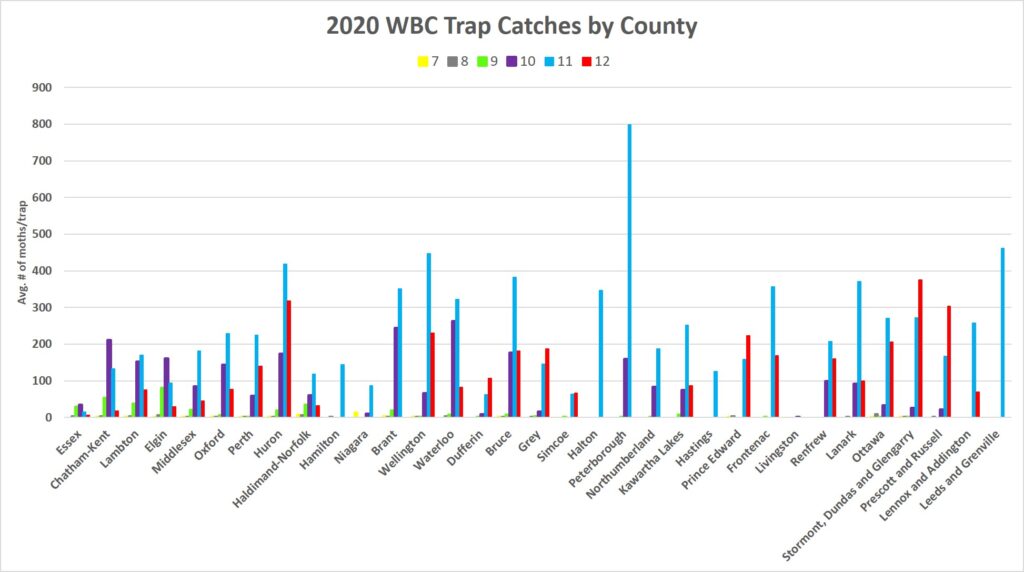Here is the latest update on where the trap catches are for western bean cutworm in the region based on trap site data entered into the Great Lakes and Maritimes Pest Monitoring Network. Peak flight for Ontario and most other states and provinces on the network (except Michigan) occurred during Week 11 (Aug 3-9) (see Fig. 1). Trap catches are starting to drop this week. That means that the majority of the egg laying has taken place in these last two to three weeks. Later planted corn fields and dry beans will be more attractive from now on.

Figure 1. WBC Trap Catches Up to Week 12 (Aug 10-16)
Comparing 2020 to 2019, this year’s moth flight was much higher. Thankfully, this year’s crops got in much earlier which will be a benefit. An early harvest will help reduce the risk of ear mould and pod disease development, which is the main risk with western bean cutworm injury.

Dry beans have been catching more moths than corn over the last two weeks, though thankfully dry bean trap sites are also seeing counts drop this week. Dry bean producers need to be scouting fields for any signs of injury. Fields that have caught at least 150 moths are more likely to be at risk. Scout random areas of the fields in a zig zag pattern, turning over leaves looking for eggs or larvae and inspecting each pod for any signs of feeding.

Going across counties west to east, most counties peaked in Week 11. Peterborough saw the largest average number of moths per trap. Some counties in the east are still seeing decent catches this week (Week 12) and may be peaking now. Fields that are not in brown silk stage should be scouted for egg masses and small larvae in the leaf axils and ear tips. Time applications before brown silk stage if thresholds are reached. If larval feeding is noticed and applications could not be made in time, plan to scout those fields again in early September to determine harvest scheduling. If ear moulds are developing, plan to harvest these fields early.

For more information on western bean cutworm management, refer to the infosheets found here: https://fieldcropnews.com/2020/04/western-bean-cutworm-2020-infosheets-corn-and-dry-beans/